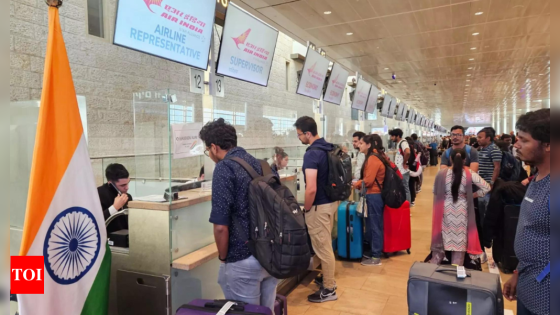United States-based personal computer giant HP said it remains committed to its operations in China after denying a report that it was shifting more production outside the world’s second-largest economy, which sparked fresh scrutiny of the mainland’s manufacturing supply chain.
HP – the world’s second-largest PC vendor behind Lenovo Group, according to research firm IDC – told Chinese tabloid The Global Times that Nikkei Asia’s report on Wednesday about the company’s “most aggressive shift of production away from China” was false.
“In China, HP’s PC manufacturing business remains pivotal,” HP said in a statement cited by Global Times, which is under the Chinese Communist Party mouthpiece People’s Daily. “To further enhance the resilience of the supply chain, we are actively optimising our strategy and increasing our flexibility to better serve our global customers and meet their diverse needs.”
Do you have questions about the biggest topics and trends from around the world? Get the answers with SCMP Knowledge, our new platform of curated content with explainers, FAQs, analyses and infographics brought to you by our award-winning team.
HP did not immediately respond to an emailed inquiry on Thursday.

A shopper checks out merchandise at a store in Hong Kong that sells HP laptop and desktop personal computers, as well as printers. Photo: SOPA Images/LightRocket via Getty Images alt=A shopper checks out merchandise at a store in Hong Kong that sells HP laptop and desktop personal computers, as well as printers. Photo: SOPA Images/LightRocket via Getty Images>
The company was formed in November 2015 as the legal successor to the original Hewlett-Packard, which spun off its enterprise product and business services units as Hewlett Packard Enterprise.
HP’s statement to mainland media in response to the Nikkei Asia report provides little to boost confidence in the mainland’s manufacturing supply chain, which has been hit hard in recent years by US tech restrictions and trade sanctions, and Beijing’s previous enforcement of rigid Covid-19 control measures.
According to the Nikkei Asia report, HP plans to make up to 70 per cent of its PCs outside China within two to three years. The firm was looking at potential production sites in Thailand, while it sets up a backup design hub in Singapore, the report said.
Last year, Nikkei Asia reported that HP was shifting some production assembly operations from China to Thailand and Mexico. HP said that it remains “deeply committed” to its computer manufacturing operations in Chongqing, the report said.


A bird’s-eye view of Chongqing, the southwestern city on the mainland where HP assembles its personal computers. Photo: Shutterstock alt=A bird’s-eye view of Chongqing, the southwestern city on the mainland where HP assembles its personal computers. Photo: Shutterstock>
Other American tech giants, including Apple, Dell and Microsoft, are already making moves to to diversify their supply chains outside the mainland.
Foxconn Technology Group – the world’s largest electronics contract manufacturer, as well as Apple’s prime supplier of iPhones, iPads and other devices – has been making steady strides in building production facilities in India and Vietnam. The Taiwanese firm, formally known as Hon Hai Precision Industry, last month said it will invest about US$551 million in two new projects in Vietnam.
Microsoft earlier this year offered China-based employees working in artificial intelligence the option to relocate overseas in countries such as the US, Australia and Ireland, according to a South China Morning Post report in May, which cited sources. Microsoft has reportedly shifted production of its Xbox game console from China to Vietnam before 2022.
According to a January 2023 report by Nikkei Asia, Dell plans to stop using China-made semiconductors this year and urged its suppliers to cut down on components sourced from the mainland amid concerns over escalating tensions between Beijing and Washington.
This article originally appeared in the South China Morning Post (SCMP), the most authoritative voice reporting on China and Asia for more than a century. For more SCMP stories, please explore the SCMP app or visit the SCMP’s Facebook and Twitter pages. Copyright © 2024 South China Morning Post Publishers Ltd. All rights reserved.
Copyright (c) 2024. South China Morning Post Publishers Ltd. All rights reserved.
Source Agencies



